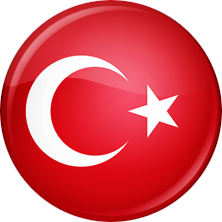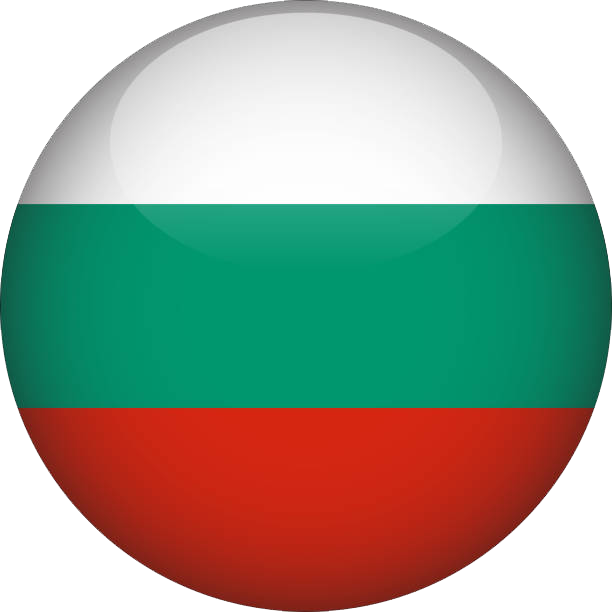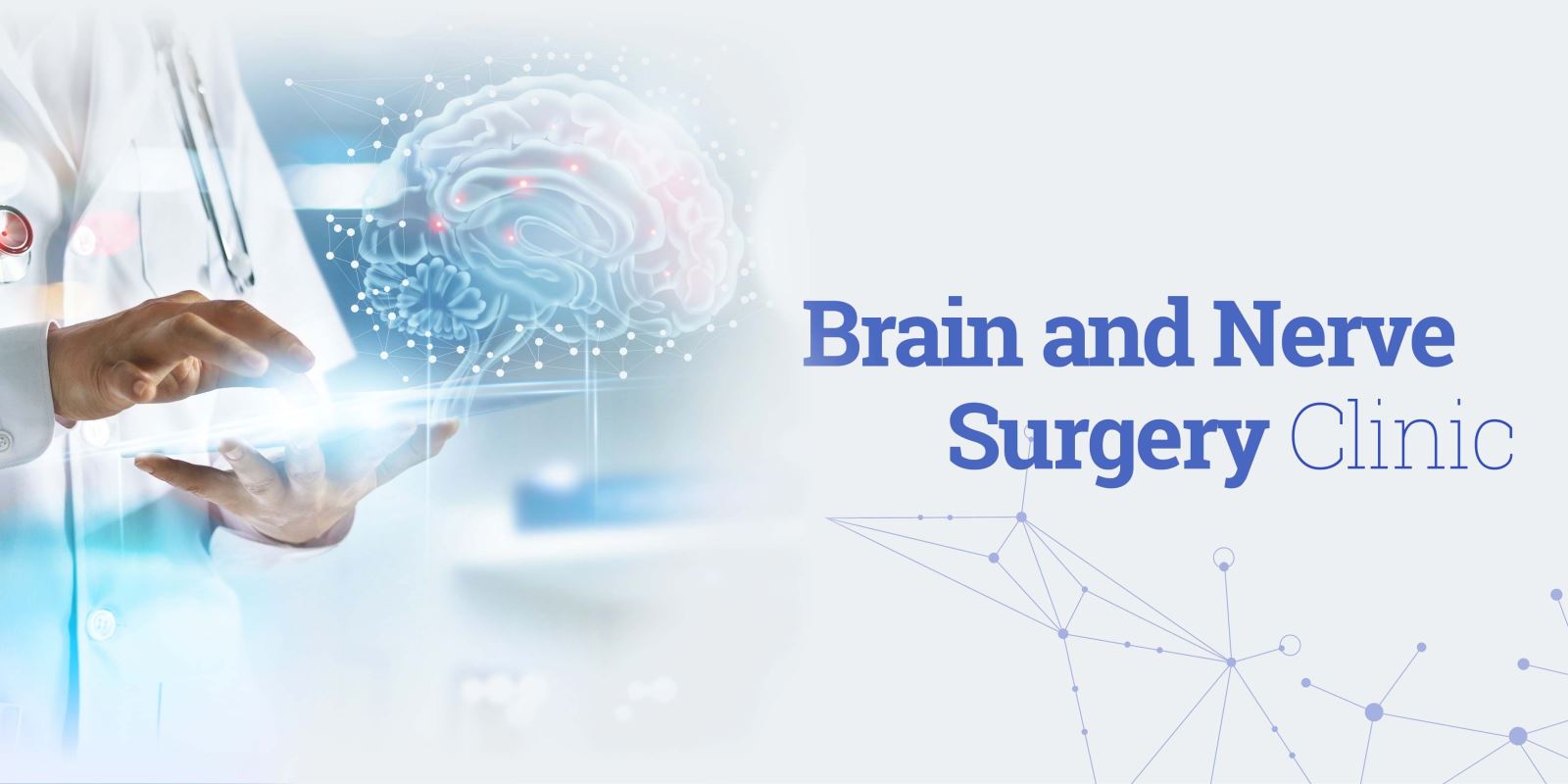Brain and Nerve Surgery

Brain tumors constitute an important disease group of neurosurgery.
Brain-Spinal Cord and Nerve Surgery (Neurosurgery)
• It concerns about surgical treatment of tumors that originate from inside the brain, pituitary or spinal cord tissue or that cause problems by pressing it from the outside, diseases, disorders that cause epilepsy,
• Aneurysm (ballooning) of the vessels feeding the brain tissue or the spinal cord,
• Diseases such as arteriovenous malformation, cavernoma; stenosis in the neck vessels, which we call carotid stenosis,
• Disorders that develop during the formation of the nervous system such as meningocele, meningomyelocele associated with birth,
• An increase in the amount of fluid in the brain cavities, called hydrocephalus,
• All kinds of spinal diseases, especially herniated disc,
• Head, spinal cord and spine injuries, nerve injuries originating from the head and spinal cord, tumors and compression of arm and leg nerves,
• Clogging of cerebral vessels and
• Cerebral hemorrhages.
Brain Tumors
Brain tumors constitute an important disease group of neurosurgery. In general, we can classify brain tumors as malignant and benign.
I-Malignant Tumors
A-Glial Tumors: These are the most common tumors of the brain. These make most of the malignant tumors of the brain. It includes cells with uncontrolled proliferation. They grow rapidly and extend into the healthy tissue around them, and in rare cases can spread to the spinal cord or even to other organs of the body. Its staging is done in four groups. Stage I and Stage II are called "low stage", while Stage III (anaplastic astrocytoma) and Stage IV (glioblastoma multiforme) are considered "high stage". Some other tumors in this group are ependymoma, medulloblastoma, oligodendroglioma. Survival periods are related with pathology staging, radiotherapy, whether chemotherapy is applied or not, and age. The survival time is long in low-grade glial tumors. Low-stage tumors can turn into high-stage tumors. The average survival chances for high-grade gliomas are much shorter.
B-Metastatic brain tumors: Tumors that come as a result of the spread of a tumor elsewhere in the body to the brain. They mostly originate from the lung, breast, large intestine, stomach, skin or prostate. However, sometimes the organ from which it has originated may not be detected. Brain metastases are seen in 20-40% of patients diagnosed in oncology clinics and hospitalized for treatment. This rate constitutes 10% of all brain tumors. If possible, making a definitive diagnosis by taking a biopsy with stereotaxic surgery, which can be performed with local anesthesia, facilitates the choice of treatment.
Treatment options in malignant brain tumors are surgical intervention, biopsy, radiotherapy, drug therapy, chemotherapy, immunotherapy and radio surgery. Response to treatment is related to factors such as the focus of the tumor, the number of organs it has spread, the number of metastatic lesions, the age of the patient and the presence of additional diseases. Therefore, survival times are different.
II-Benign Tumors
These are tumors that usually develop inside the skull but outside of the brain tissue. Meningiomas, pituitary adenomas, craniopharyngiomas, dermoid and epidermoid tumors, hemangioblastoma, colloid cyst, subependymal giant cell astrocytoma and neurinomas are the most common lesions of this group. Menengiomas constitute a significant part of this group. Unlike benign tumors in other organs, benign brain tumors can sometimes cause life-threatening conditions depending on the location and malignancy characteristics. Some of these tumors, though rare, can turn into malignant tumors. Since they do not usually spread to the surrounding brain tissue, they have a high chance of being completely removed surgically. However, they may reappear, albeit to a small extent. It is known that 20% of the meningiomas can recur in 10 years, even if they are completely removed.
Symptoms
Patients with brain tumors can apply with one or a few of the complaints such as headache, vomiting, nausea, visual disturbance, impaired consciousness, seizures, weakness in arms and legs, nervousness, loss of appetite, hearing loss, forgetfulness, inability to speak and understand, inability to write, imbalance, and enlargement of hands and feet. Headache (usually more severe in the morning) and seizures are the most common symptoms.
Diagnostic Methods
Diagnosis is usually made by clinical evaluation, computerized brain tomography (CT) or magnetic resonance imaging (MRI). In order to better define the tumor margins and characteristics, these examinations can be repeated with contrast material. Definitive diagnosis is made after pathological examinations. Some diagnostic tests include direct skull radiographs, EEG, whole body bone scintigraphy and hormone examinations.
Methods of Treatment
Surgical removal of the tumor is usually the first option for almost all brain tumors. In a few of them, partial removal or radiotherapy and follow-up are recommended due to the high risk rate. Especially in high-grade glial tumors, after the diagnosis is confirmed by biopsy, radio-surgery or chemotherapy (drug therapy) can be applied instead of tumor removal. Some of the benign lesions located in the brain stem can be surgically removed, and in some, radio-surgery (Gamma knife, linear accelator = linac) can be applied. Briefly, the malignancy degree and location of the tumor, the age of the patient, the general condition and the presence of additional systemic problems determine the limits of surgical decision making and surgical removal of the tumor.
In summary; today, in the treatment of brain tumors, surgery, radiotherapy (radiation therapy), radio-surgery and chemotherapy (drug therapy) methods are generally applied separately or in combination according to the pathological diagnosis of the tumor.
Possible Complications After Surgery
Postoperative complications are associated with tumor type, location, age and general condition of the patient. Some of the possible surgical complications are seizures, severe headache, nausea, vomiting, bleeding, worsening of the current neurological condition, impaired vision, speech and perception, hydrocephalus, swelling of the extremities, redness, delayed healing of the wound, infection, thromboembolism and some psychiatric problems. Most of these complications can be resolved with postoperative medical care, while some (eg worsening of the neurological condition) may be permanent. One or more of these complications may develop in the same patient. However, the most important point that should not be forgotten that in the presence of a tumor, systemic problems caused by this tumor in the brain are often life threatening.
Follow-up and Recommendations
If the tumor is benign and completely removed, clinical and MRI control is usually performed once a year after the first and six-month controls. In malignant tumors, it is appropriate to determine the control times by considering the follow-up of a neurosurgeon, medical oncologist (specialist in treatment with cancer drugs), radiation oncologist (specialist in radiotherapy of cancer), physical therapy and rehabilitation departments. Writing the necessary examinations at the time of discharge makes it easier for the patient to match his/her appointments. If the patient has any problems (headache, seizure, unconsciousness, weakness in arms and legs, etc.) during the follow-up period, he/she should apply to the clinic, emergency service or the physician he/she takes treatment.
Some Definitions
Benign: It is a typically slow-growing tumor definition without cancer.
Biopsy: A small piece of tumor tissue taken to determine the type of tumor in pathological examination. If possible, performing with stereotaxic surgery instead of open surgery may lead to fewer complications.
Burr hole: A hole in the skull. It is performed due to bleeding, for removing the bone, discharging abscess or performing a biopsy.
'Grade': It is a special definition used in grading tumors and determining some of their characteristics. For example, 'grade' I grows slowly, while 'grade' IV tumor grows the fastest.
Chemotherapy: The use of medicines in cancer treatment. They are given orally or intravenously = drug therapy
Craniotomy: Removing a piece of bone in the skull and replacing it at the end of the surgery.
Malignant: It is the definition made for tumors (cancers) whose cells grow uncontrolled.
'Survey': Survival time = Survival
Radiotherapy: Treating the tumor with radiation beams = Radiation therapy
Herniated Disc and Its Treatment
Anatomy of the Waist
Our waist is a structure that carries the weight of our body, transfers the load from the hips to the legs, and at the same time enables our body to be mobile in our daily activities. There are 5 vertebrae and cartilage cushions (disc) connecting these vertebrae, joint structures and soft tissues that support them. The lumbar vertebrae, in addition to contributing to movement and carrying a load, acts as a protector for the spinal cord and nerve roots like the other parts of the spine. The nerves that carry muscle control of the legs, the sense of the legs and control of urine, gaita and sexual functions come out of the spinal cord passing through the lumbar vertebrae.
Causes of Low Back Pain
Low back pain is generally a disease of the lumbar region of the spine. Any trauma or non-trauma reason that develops in the vertebrae, disc and soft tissues located in the waist can cause low back pain.
Low back pain is one of the most important reasons limiting the daily activities of an individual today. It is known that around 80% of the population all over the world have experienced low back pain attack at least once in any period of their lives. Low back pain takes the second place among chronic diseases seen in societies with developed back pain, after heart diseases, and ranks fifth among diseases that undergo surgical treatment. Low back pain is seen in the 20-40s most commonly. We can divide low back pain into 2 groups as acute and chronic. In acute back pain, the pain usually reduces within a few days and disappears completely after a few weeks. If the pain persists for more than 3 months, this pain is called chronic low back pain. While the complaints of 90% of patients with low back pain disappear spontaneously within the first 4 weeks, only 5% of them become chronic. In most low back pain, the cause of the pain is determined by history and clinical examination, nothing can be found in auxiliary examinations and radiological examinations.
We generally call this type of pain "Mechanical low back pain".
We can collect the causes of low back pain in 2 large groups.
1- Musculoskeletal diseases
2-Spine diseases
1- Musculoskeletal Diseases
Most of the low back pains fall into this group. It is mostly caused by minor damage to muscles, connective tissue or joints. The term "myofascial pain syndrome" is used for the clinical picture caused by excessive stretching and injury of muscles and soft tissues. Other musculoskeletal problems that lead to lower back pain include improper body posture, short leg, smoking as it causes low oxygenation of the vertebrae and cartilage in the waist and psychosocial factors such as stress.
2-Spine Diseases
Diseases in this group are proportionally less common than musculoskeletal diseases. In this group, the most common causes of low back pain are hernias (lumbar disc hernias), erosion of the disc tissue (degenerative disc disease), lumbar spondylolisthesis, narrowing of the lumbar spine canal (lumbar stenosis). Apart from these, collapses due to tumor, infection, trauma, bone resorption (osteoporosis) can be counted, which are much less common but serious diseases of the spine.
a) Herniated Disc (Lumbar disc herniation): The disc material consists of a relatively hard sheath outside between the two vertebral bodies and gel-like soft tissue parts inside. It acts like a cushion and undertakes the task of distributing the body's loads. However, if excessive load is placed on the lumbar vertebrae (excessive weight gain, unconscious waist straining and heavy lifting), other structures that support the waist, especially if the waist and abdominal muscles are weak (lack of exercise), or deterioration in these discs due to structural and genetic reasons may cause low back pain and herniated disc. If the outer sheath of the disc weakens or tears and the material inside slips out and starts to put pressure on the nerves, this is called "lumbar hernia". While the weakening or tearing of the outer layer often causes low back pain, the hernia, which can be defined as the displacement of the inner layer outward, causes pain that strikes the leg especially as it puts pressure on the nerve root. It is the leg pain that is more prominent than low back pain in lumbar hernia. Depending on the pressure on the nerves, pain, weakness, numbness in thigh and leg and rarely urinary incontinence may occur.
b) Lumbar spondylolisthesis: It is the sliding of a vertebral body over the other vertebral body forward or backward. If there is pressure on the nerve roots due to this disorder, pain, weakness and numbness may occur in the thigh and leg in addition to low back pain.
c) Narrowing of the lumbar spinal canal (Lumbar narrow canal = spinal stenosis): The canal in which the spinal cord and nerves coming out of the spinal cord travel inside the vertebral bones is called the spinal canal. Narrowing may occur in this canal as a result of many factors such as trauma, misuse of the body, genetic factors, thickening and roughening of the soft tissue and bone structures that make up the spinal canal. As a result, compression occurs in the nerve roots. These patients especially complain of pain and numbness in the calf that occurs when standing and walking. When they sit and lean forward, their pain complaints reduce or pass off. This clinical picture that occurs when standing or walking is called "neurogenic claudication".
d) Wearing of the disc tissue (Degenerative disc disease): The fluid rate of the part that forms the disc inner layer is higher in the childhood and young ages. With aging, the fluid rate decreases, the disc height begins to decrease, small tears develop in the outer layer. The disc's ability to carry load and move is reduced. Low back pain occurs with the stimulation of the nerve fibers in the outer part of the disc. Low back pain in these patients is more than leg pain.
EVALUATION AND DIAGNOSIS OF PATIENTS WITH LOW BACK PAIN
As mentioned above, most of the back pains are caused by excessive stretching or minor damage to the muscles and soft tissues. In these patients, since the pain complaints will regress spontaneously within a few days, they usually do not need to be examined. However, the following reasons require immediate medical attention.
• Recurrent attacks of low back pain
• Chronic back pain
• Increasing pain intensity
• Symptoms accompanying low back pain, such as thigh and leg pain, numbness, weakness, inability to urinate and stool or incontinence, sexual dysfunction
• Low back pain that does not go away with rest
• Excessive weight loss, fever, cold and chills along with low back pain
While investigating the causes of low back pain of the patient, the history should be taken and the examinations should be performed in accordance with the pre-diagnosis determined after the necessary examination.
a) If lumbar hernia and excessive tension in muscles and soft tissues are considered as the cause of acute low back pain, bed rest (not exceeding 5 days) and drug treatment are recommended for these patients.
b) In cases with chronic low back pain, who have been given rest and medical treatment for acute low back pain, but whose pain has not resolved, spine tumor or spine infection is suspected, it is necessary to start our examination with direct radiography and to determine the lesion level and diagnose the disease with Magnetic Resonance Imaging (MRI). In addition to these tests, if infection or tumor is suspected in the patient, blood tests and bone scintigraphy should be performed.
TREATMENT OF LOW BACK PAIN
Treatment for low back pain should be determined according to the cause of the pain and the location of the disease.
1-Treatment in acute low back pain
Painkillers, muscle relaxants and short-term bed rest alone are sufficient in most cases for low back pain (Mechanical low back pain) due to excessive stretching of muscles and soft tissues or minor injuries.
Back pain due to trauma and infection: if there is weakness in the legs due to pressure on the nerves and / or inability to urinate and stool voluntarily or incontinence, if there is instability in the spine (abnormal mobility), surgical intervention should be performed, and if the cause is infection, additional antibiotic treatment should be given.
Low back pain due to tumor:
i- If there is weakness in the legs due to compression of the nerves and / or if there are complaints of voluntary urination and inability to urinate, or if it causes instability in the spine (abnormal mobility), surgical intervention can be performed and radiotherapy-chemotherapy is recommended according to the tissue diagnosis.
ii- If there is no sign of compression on the nerves, first of all, the type of tumor is determined by biopsy and surgical intervention and/or radiation therapy and chemotherapy should be performed depending on the situation.
Lumbar hernia, slipped waist, back pain due to spinal narrow canal:
i- If there is weakness in the legs due to pressure on the nerves and/or complaints of being unable to void or defecate or incontinence, and if there is instability in the spine (abnormal mobility), surgical intervention is absolutely necessary. Although there are no neurological findings such as loss of strength, if the quality of life of patients is affected due to prolonged pain, pain may be the sole reason for surgical intervention. When choosing the surgical intervention method, each patient should be evaluated separately and the appropriate technique should be selected for that patient.
ii- If there is no sign of compression on the nerves, painkillers, muscle relaxants and bed rest (not exceeding 5 days) are recommended.
2-In cases where the cause of chronic low back pain is herniated disc, slipped back, narrowing of the spinal canal or wear of the disc tissue, if progressive neurological findings exist (muscle weakness, being unable to void or defecate or incontinence), surgical intervention; if not, painkillers, muscle relaxants and physical therapy, muscle exercises following short-term bed rest are recommended.
PREVENTION OF LOW BACK PAIN
Especially in order to prevent recurrent low back pain, the patient should get rid of excess weight, stop smoking if he/she smokes, do regular and continuous muscle exercises for waist, back and abdominal muscles, and correct inappropriate posture, sitting and lying positions.
Neck Pain
There are 7 vertebrae in the neck area. Between the vertebrae there is cartilaginous tissue called the disc that starts between the second and third vertebrae. The neck has the ability to move our head in all directions and a structure that carries the weight of the head. It provides these movements through the discs and joints between the vertebrae. The spinal cord passes through the cervical vertebrae. The nerves that provide the movement of the arm muscles and the sense of the arms come out through the holes on the sides between the vertebrae. Neck pain is a common complaint because the cervical vertebrae have a very moving structure. Half of people in the adult age group experience a neck pain attack at least once in their lifetime. One should mention the following in this regard. Studies show that women have low back and neck pans one and a half times more than men.
TYPES OF LOW BACK AND NECK PAIN
There are two main types of neck pain: Mechanical neck pain and pain due to spinal pathologies
1.Mechanical Neck Pain
It is the most common type of neck pain. It is mostly caused by minor traumas affecting the neck or minor injuries affecting the neck muscles and connective tissue. Improper posture is the most important cause of this type of pain. It is a common complaint especially in people who work in a leaning position at a desk all day long. Mechanical neck pain can spread to the head, shoulders, and arms. Often, the true cause and location of the pain cannot be found.
2. Neck Pain Due To Spine Diseases
Neck pain is proportionally less common in this group than mechanical neck pain. The most common causes are:
a) Neck hernia (Cervical disc herniation)
b) Degeneration / wear on the cervical vertebrae (Cervical spondylosis)
c) Spinal cord involvement due to narrowing in the cervical spinal canal (Cervical spondylotic myelopathy)
a) Neck hernia (Cervical disc herniation)
The disc material consists of a relatively hard sheath outside between the two vertebrae and a gel-like soft tissue part inside. With the weakening or tearing of the outer sheath, the inner part shifts outward and begins to press on the nerves. While the weakening or tearing of the outer layer often causes neck pain, the neck hernia, which can be defined as the displacement of the inner layer outward, causes pain that strikes shoulder and arm especially as it puts pressure on the nerve root. Arm pain is often more severe than neck pain because of compression on nerve roots. Depending on the pressure on the nerve roots, there may be weakness and numbness in the arm and hand muscles.
b) Degeneration/wear on the cervical vertebrae (cervical spondylosis)
Especially with aging, the fluid rate of the disc located between the vertebrae in the neck decreases and the ability of the disc to contribute to movement decreases. With the deterioration of the disc, the height decreases and the joints at the back of the cervical vertebrae begin to put more stress. Imbalance in load distribution and mobility causes deterioration in the vertebrae and abnormal bone extensions occur. These bone extensions can cause pain in the neck. In addition, it causes pressure on the nerve roots and the spinal cord, causing arm pain similar to a neck hernia, and weakness and numbness in the arm and hand.
c) Spinal cord involvement due to narrowing in the cervical spinal canal (Cervical spondylotic myelopathy)
If there are signs of pressure on the spinal cord due to spondylotic changes in the cervical spine and narrowing of the spinal canal, it is called "spondylotic myelopathy". When there is constant pressure in the spinal cord, symptoms such as a feeling of tension in the legs, stiffness, difficulty walking, weakness in the arms and numbness are observed.
Evaluation and Treatment of the Patient with Neck Pain
Treatment in Mechanical Neck Pain: The most common cause of neck pain is "mechanical neck pain". This pain gradually decreases within 2-3 days and disappears within 1-2 weeks. Sometimes the pain can become chronic and sometimes deteriorates in acute attacks. Pain or numbness in the arm or hand can be a sign of nerve root compression. In this case, it is useful to consult a doctor to be evaluated in terms of neck hernia.
In what situations can the cause of pain be serious?
- If the patient has a serious systemic disease such as cancer, rheumatoid arthritis
- If the pain is increasing rather than decreasing day by day,
- If the loss of strength in the arms - a change in sensation has occurred
- If there are symptoms such as fever, weight loss accompanying the pain
- If there is sensitivity in the neck bones
The aim of the treatment of mechanical neck pain is to bring the neck movements to normal as soon as possible. Since neck movements are painful at the beginning, the person wants to keep their neck still. However, in order to prevent the stiffness of the neck, it is necessary to make natural movements by constantly increasing the degree of pain as much as it allows. Using a neck collar is not recommended as it restricts neck movements. Ensuring the neck to move in normal way as soon as possible prevents the pain from becoming chronic. Pain relievers are helpful to reduce pain. Tablets containing paracetamol or anti-inflammatory drugs help to make neck movements easier by reducing pain. If muscle spasm is evident, muscle relaxant drugs can be used for 2-3 days. Due to the side effects of the drugs, appropriate drug therapy should be started according to the doctor's recommendation.
Cervical Disc Herniation Treatment: Severe pain affecting the arm due to pressure on the nerve root is the most important symptom of cervical disc herniation. The pain usually goes away spontaneoulsy. The pain, which is severe in the first week, decreases within 4-6 weeks and disappears. Pain medication is recommended to reduce the severity of pain during this period. Neck collar can be used with doctor's recommendation. Pain may persist even after 6 weeks in a small group of patients. Surgical intervention may be considered in chronic pains or severe pain that is unbearable despite painkillers. Some patients develop a loss of strength due to pressure on the nerve root. The development of loss of strength requires surgery to remove the pressure on the nerve. Spontaneous recovery does not mean that the disease passes off. In order not to get the same pain attack again, the patient should protect his/her neck and do neck exercises to strengthen the muscles around the neck.
Treatment of cervical spondylosis: Cervical spondylosis is a common radiological finding, seen especially in the elderly. It doesn't always cause pain. If it causes neck pain only, strengthening the neck muscles with the recommended neck exercises helps to reduce the pain. Physical therapy methods are also useful.
Treatment in spinal cord involvement due to narrowing of the cervical spinal canal (cervical spondylotic myelopathy): If cervical spondylosis compresses the spinal cord and nerve roots, the pressure should be removed with surgery. Chronic pressure, especially on the spinal cord, can cause irreversible changes in the spinal cord. Therefore, the emergence of symptoms such as the feeling of stiffness in the legs, loss of strength and the gradual increase of these problems require immediate medical consultation. Such a condition can be progressive, and surgery is recommended to relieve pressure on the spinal cord to stop progress. The purpose of the surgical intervention is to prevent the progression of the disease by removing the pressure on the spinal cord. The operation site may change according to the place where the pressure is most and the position of the neck. What is important in cervical spondylotic myelopathy is to remove the pressure before permanent changes occur in the spinal cord.
WAYS TO PROTECT NECK PAIN
Especially avoiding movements that strain the neck and avoiding working in a prolonged position with the head bent can prevent the neck pain attack. Since it will be difficult to protect our neck in daily life, it is the best method to strengthen the muscles around the neck spine. Regular neck exercises strengthen the neck muscles and prevent minor traumas reflected on the neck spine.




